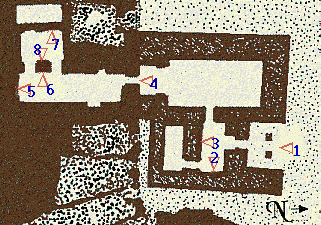
Dark corners in radiating fluids - |
| Achim Feldmeier University Potsdam, 11 June 2001 |
| This talk can be found at http://www.astro.physik.uni-potsdam.de/~afeld |
| MOTIVATION: WHY ABBOTT WAVES? |
| Abbott waves are the fundamental wave mode in radiative flows (Abbott 1980, ApJ). | They establish the information channel between infinity and the wind base. |
| Abbott waves shape the flow by mediating the evolution to the critical solution (cf. Laval nozzle or solar wind). | Possible observational evidence for Abbott waves is given by DACs (discrete absorption components) |
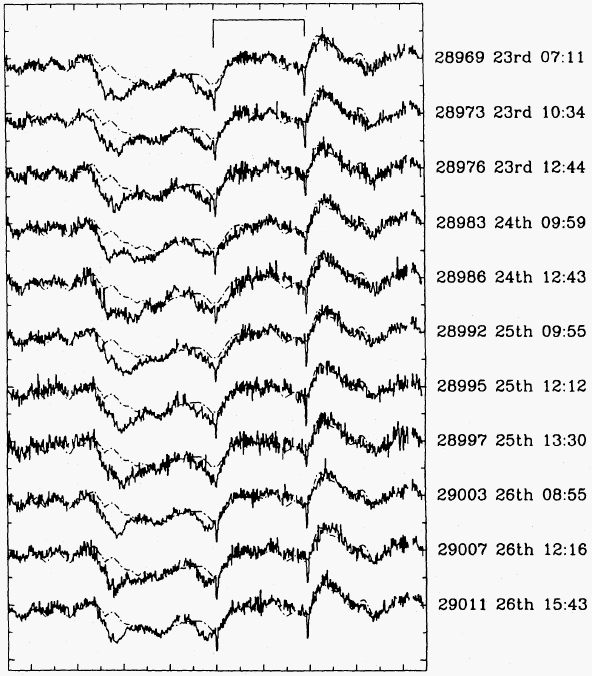
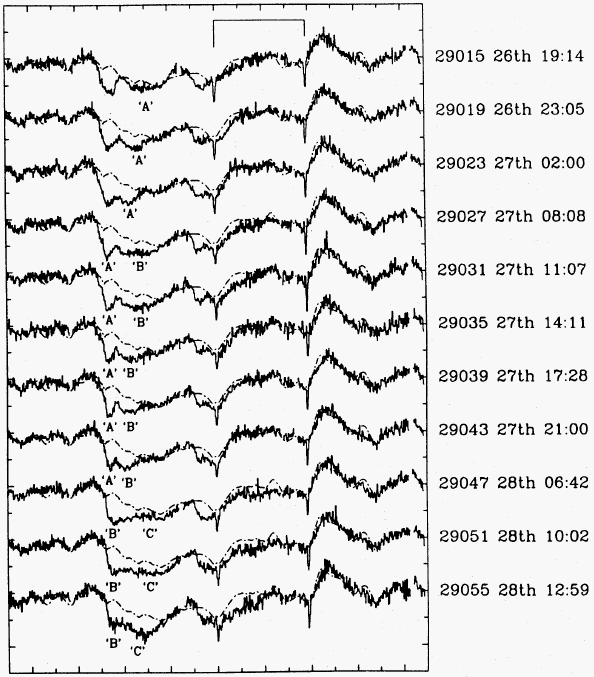
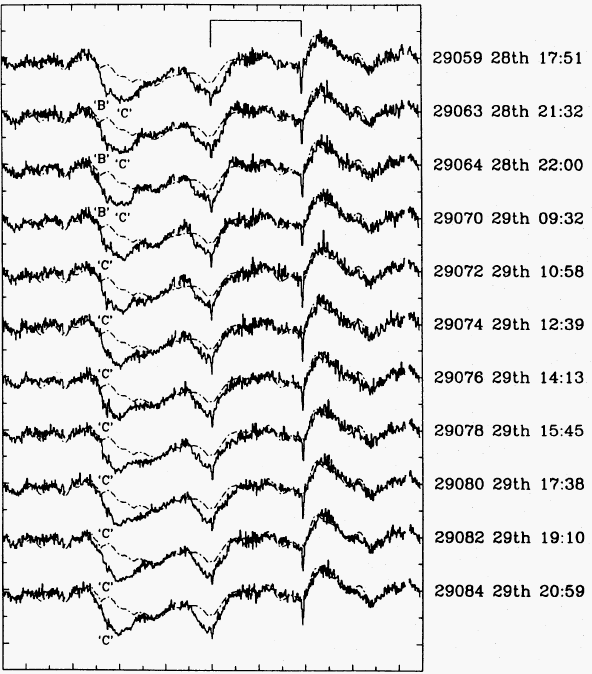
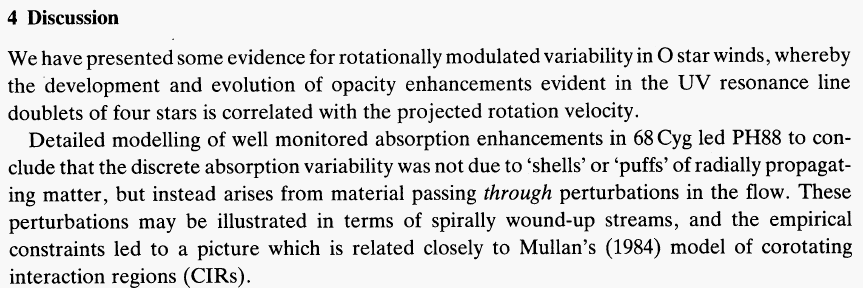
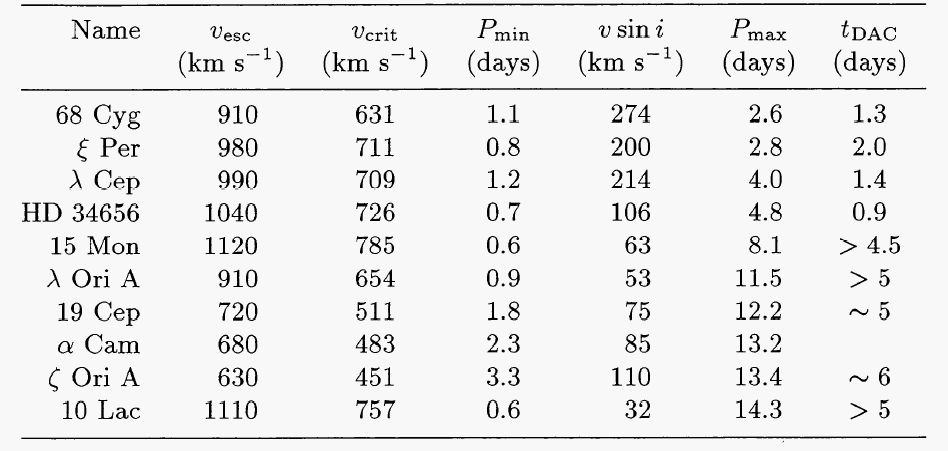
| Explanation: corotating interaction regions, as in the solar wind ( Mullan 1984, ApJ) |
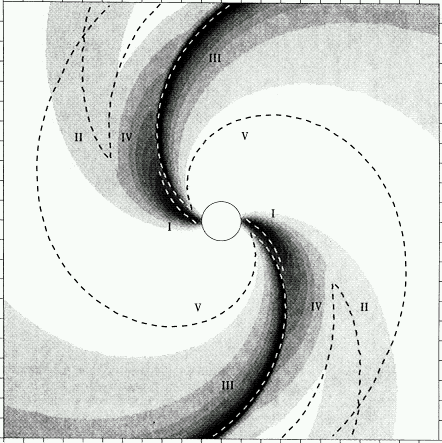
| Problem: recurrence time of CIRs is integer fraction (P/2 or P/4) of rotation period P. | Recurrence time of DACs is similar to or longer than the rotation period. |
| Shallow velocity law as origin of DACs: Hamann 1980, A&A | Shallow velocity law terminates in a kink. Abbott kink? Cranmer & Owocki 1996, ApJ |
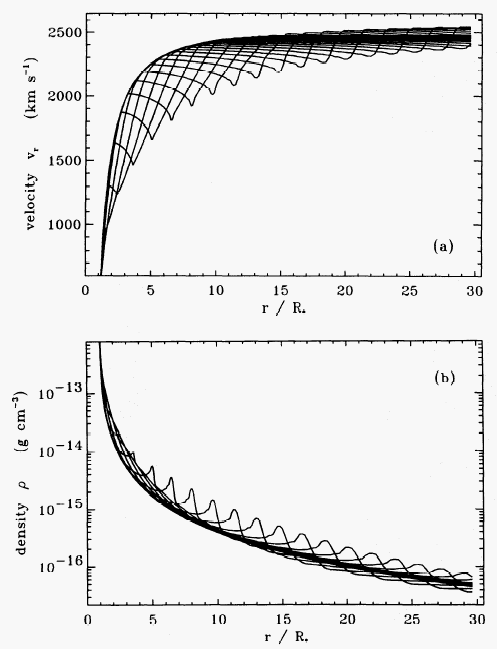
| TOPICS TREATED IN THE FOLLOWING |

|
1 SELF-EXCITED WAVES |
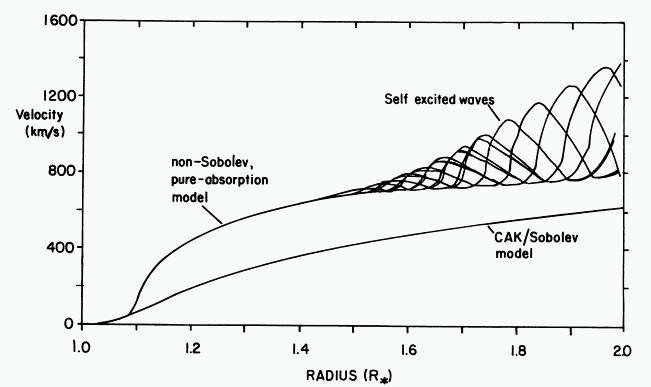
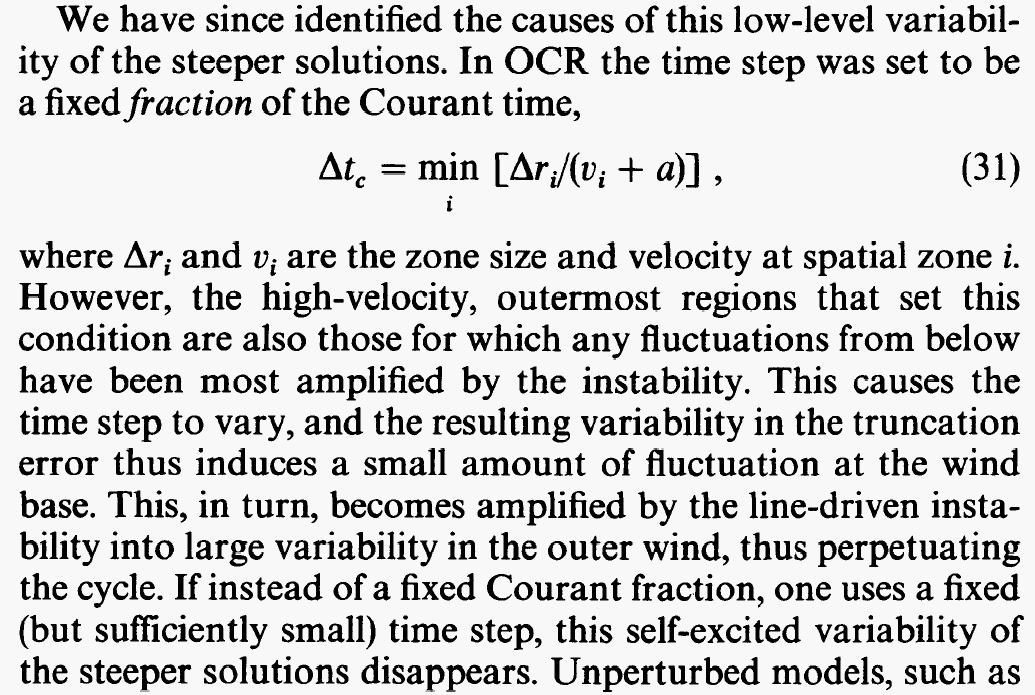
|
2 NO ABBOTT WAVES FOR PURE LINE ABSORPTION |
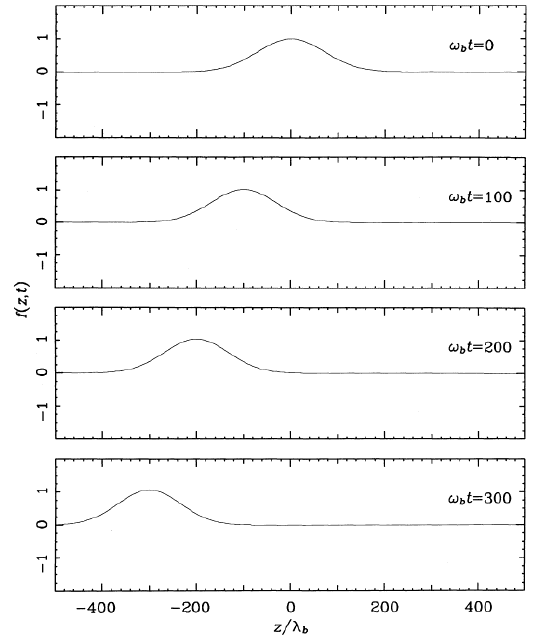 |
Upstream propagation of a smooth Gaussian pulse as an Abbott wave |
 |
Reconstruction & propagation of the full Gaussian from a truncatedone |
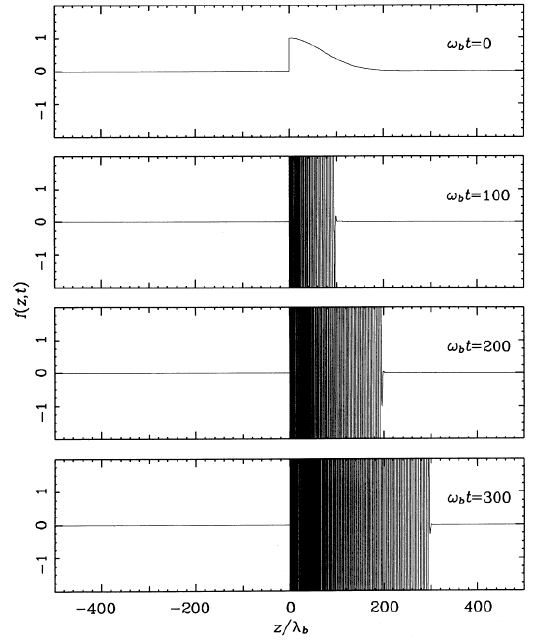 |
Reconstruction occurs only upstream of the localized perturbation |
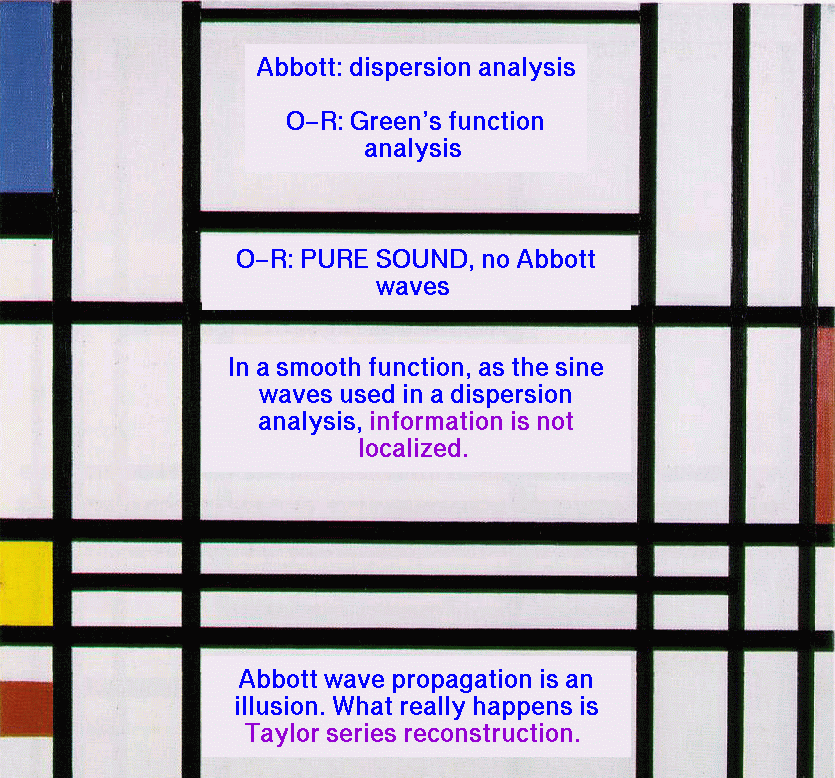
| Missing is a Green's function analysis including scattering | Has so far resisted all mathematical attempts |
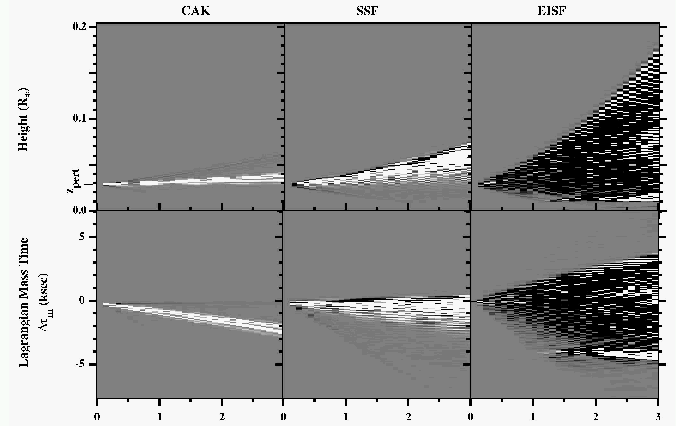
|
3 STEEP OCR SOLUTION |

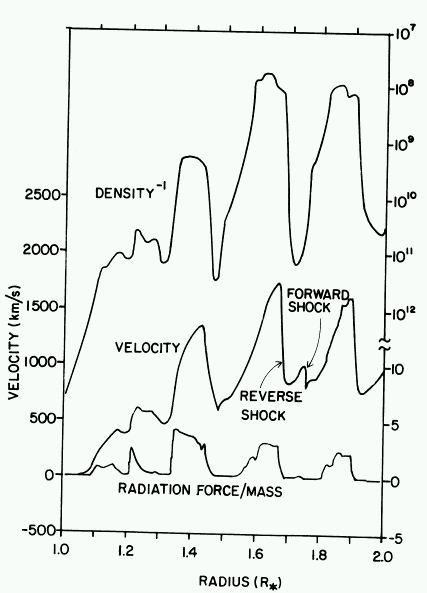
| To safe computational costs in resolving the thermal width of a line profile... | ...OCR assumed (i) large wind temperature and (ii) large ratio 1/2 of thermal-to-sound speed. |
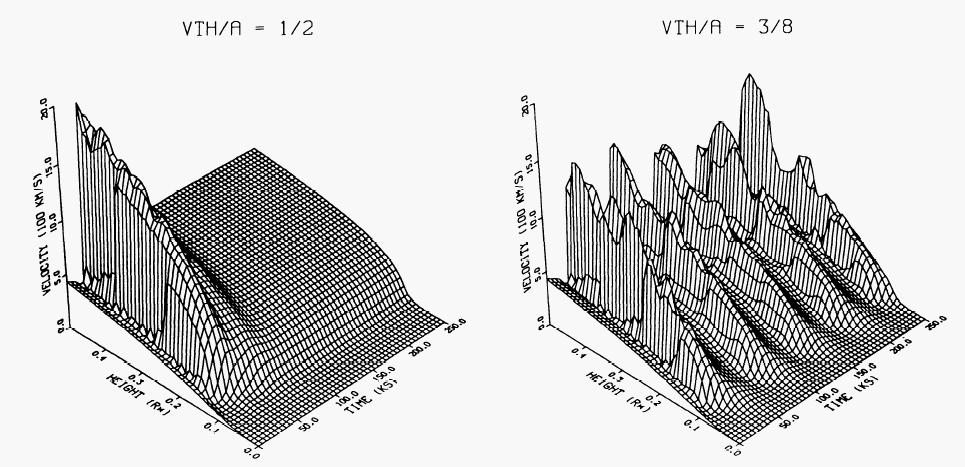
| Assuming a physically more realistic ratio of 3/8, the models no longer jump to a steep solution... | ...instead they become intrinsically time-dependent. |


| Trivial: In the zw' plane, the former equation has a saddle point at the CAK critical point. | Poe, Owocki, & Castor, 1990, ApJ: In the zv plane, the latter equation has a nodal point at the sonic point. |
| Note: these authors lost trust in the CAK critical point, believing that Abbott waves were gone (Owocki & Rybicki 1986, ApJ) |
|
4 NODAL POINT TOPOLOGY |
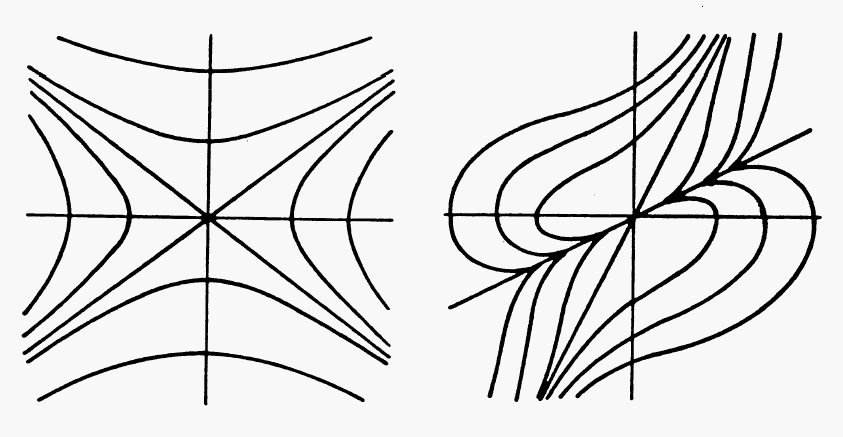
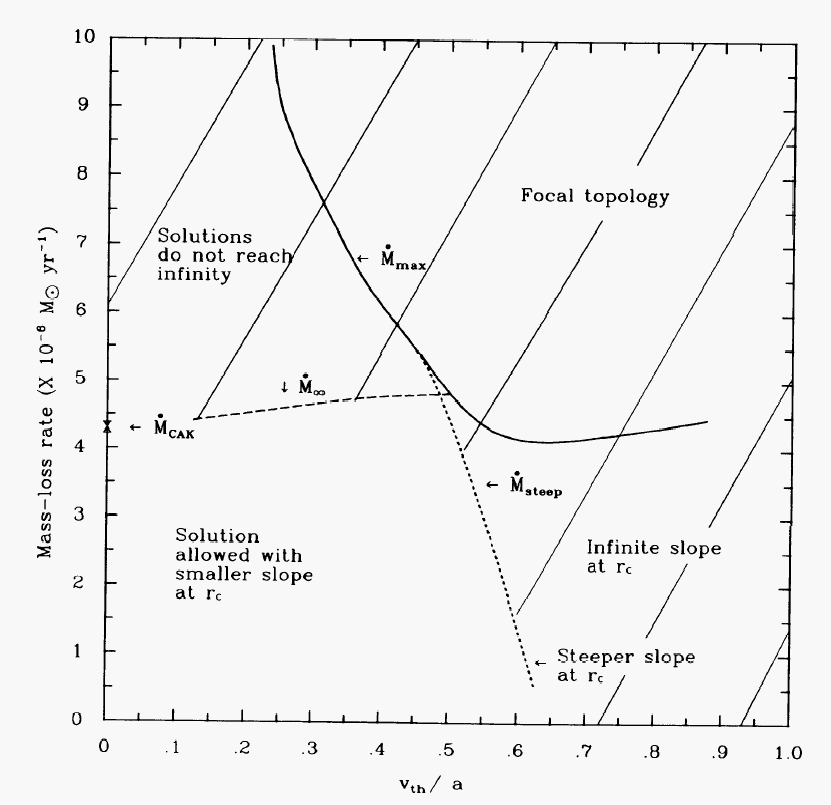

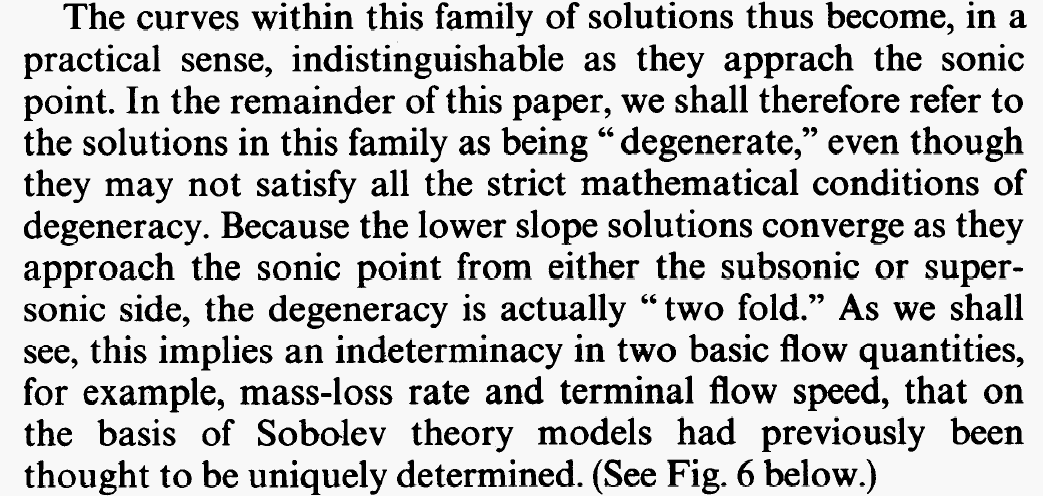



| Poe et al. and Owocki & Zank: nodal point explains solution degeneracy. |
My viewpoint: nodal point topology shows that CAK (Abbott) point and not sonic point is relevant critical point. |
|
5 VISCOSITY (POSSIBLY: RADIATIVE) |
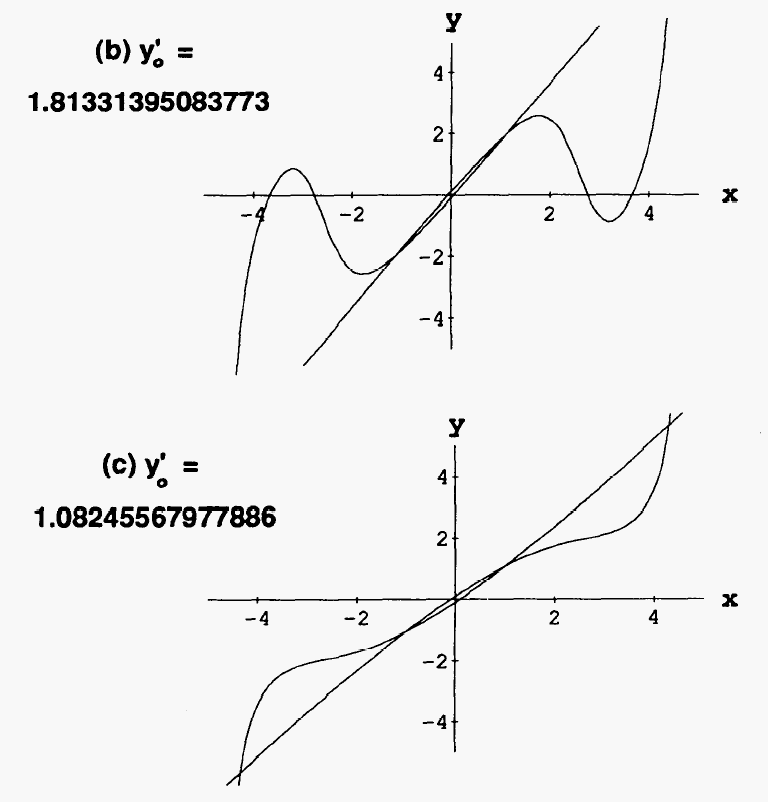

| Abbott waves: v' | Instability: v'' |
|
6 THE INFLUENCE OF SCATTERING |
|
7 ABBOTT WAVE RUNAWAY |
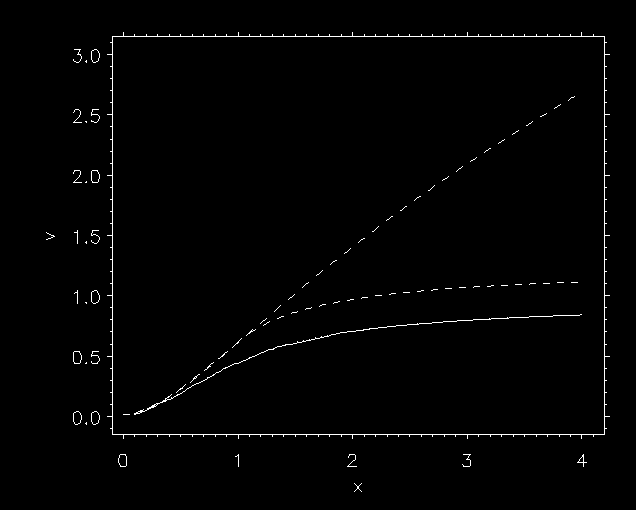
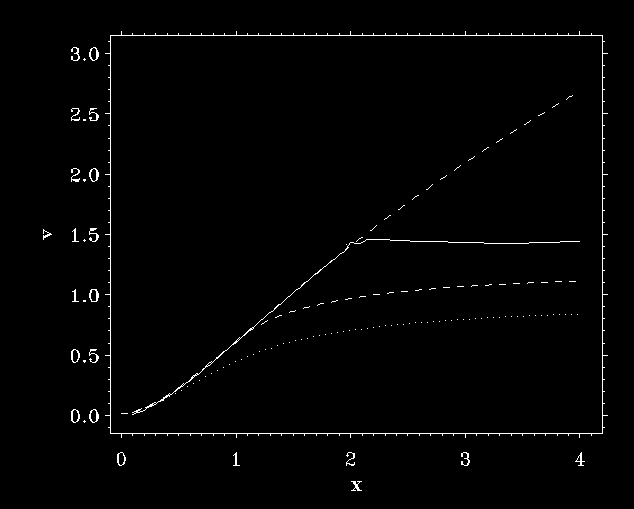
|
8 SHALLOW SLOPES VS ION RUNAWAY |
| Springmann & Pauldrach 1992, A&A: in thin winds from B main-sequence stars, radiatively driven ions may decouple from passive H plasma. |
| Bürgi 1992, J. Geophys. Res.: in the solar wind, H and He do NOT decouple. As so often, the analogy between coronal and radiative winds proves fruitful: |
| Krticka & Kubat 2000, A&A: solving 1-D, stationary hydrodynamic equations for a CAK wind using a Henyey (!) scheme, assuming `Chandrasekhar' friction between H and metals, they find: |
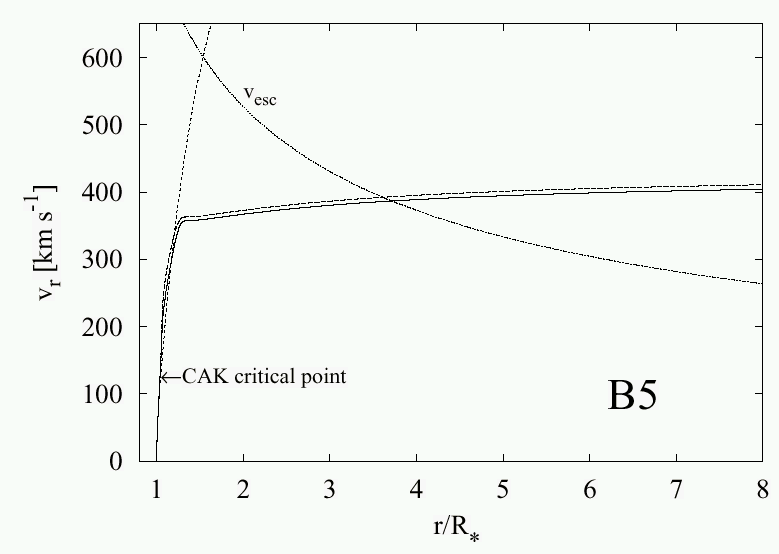
| No decoupling! Passive H plasma and radiat. driven metals... | ...adopt a shallower (no shallow?) velocity law. |

| LAST WORDS |
| critical points | Abbott waves |
| v, v', v'' | scattering |